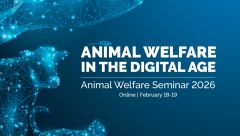Social, affectionate and intelligent, pigs are remarkable animals. They love to forage and explore and will sleep snout-to-snout with their closest pen-mates. Studies have shown that much like humans, they also dream.
Knowing this makes the extreme confinement of breeding pigs in the Australian pig industry even more unacceptable, and highlights the urgent need for reform.
Every day across Australia, most of the 2 million young pigs raised for meat are housed on concrete or slats in barren indoor farming systems, while their parents – the breeding herd - endure a portion of their lives closely confined in farrowing crates, mating stalls, or boar stalls. While their purpose may be different, crates and stalls have several things in common; they significantly restrict the movement of breeding pigs leaving them unable to turn around, walk or lie comfortably, they deny pigs the ability to perform innate behaviours and have positive experiences that could provide a good quality of life.
Pigs deserve better than a life of extreme confinement. Yet these practices remain widespread and completely legal. We can and must change the way breeding pigs are housed, urgently; here we delve into where we are now and where we need to go to give breeding pigs a better future.
Confined behind bars
On farms where sow-stalls are still in use, a female breeding pig (sow) may be kept confined for part of her 16-week pregnancy. The stall is barely bigger than the sow herself, and she will only be able to take a small step forward or backwards. The floor of the stall is usually concrete, without any bedding to make laying down more comfortable.
A week before she is due to give birth, the pregnant sow will be moved to a farrowing crate, a metal barred crate slightly narrower than a sow stall, in which she will give birth and remain until her piglets are weaned at 3-4 weeks of age. Her movement remains tightly restricted; she cannot rest comfortably or turn around and, importantly, she cannot carry out nesting behaviours or interact normally with her piglets. Once the piglets are weaned, the sow will be impregnated again (often in a mating stall, which is effectively the same as a sow stall, where she can be confined for up to five days), before returning to group housing with other pregnant sows or, if unlucky, to a sow stall on farms where these are still in use. This cycle is repeated at least twice a year for every year of a breeding sow’s productive life.
Boars (male breeding pigs) in intensive farming systems will spend most of their lives confined to boar stalls – metal-barred crates only slightly larger than a sow stall. Like sows in stalls, the boar’s movement is severely restricted as is their ability to engage in natural exploratory and foraging behaviours. Currently, Australian law only mandates that boars are released from their stalls when required for mating or twice a week for exercise, the rest of the time they remain confined.
Keeping breeding pigs confined to the extent that they cannot turn around, can only take a small step forward or backwards, cannot lie down or stand up comfortably, and cannot express highly motivated behaviours, obviously poses a serious animal welfare issue. Being unable to engage in behaviours they’re naturally driven to perform such as foraging, rooting, sniffing, and socialising with fellow pigs, leaves breeding pigs stressed and frustrated, and they may resort to repetitive behaviours such as bar biting to cope. Sows in farrowing crates cannot express nesting behaviour or choose to interact socially with their piglets. Restricted movement also means that pigs will spend much time lying down on hard concrete or slatted floors, struggling to change position and risking injuries and lameness. The increased time spent lying down does not equate to sufficient rest for confined pigs, as the constant discomfort disrupts the quality and amount of sleep they’re able to obtain. All of these factors of prolonged confinement place accumulating stress on breeding pigs.
In addition to their physical needs, pigs also need a variety of enrichment for their mental wellbeing. With the widespread understanding of pigs’ intelligence and emotional capacity, farming them in such restrictive environments seems especially cruel.
A better future for breeding pigs
The RSPCA wants to see an end to the extreme confinement of breeding pigs. We are calling on the Australian pig industry to fully transition away from the use of crates and stalls in favour of group housing for pregnant sows, crate-free farrowing pens for farrowing sows, and boar pens for breeding boars.
Group housing for pregnant sows should give sows sufficient space to move freely and rest comfortably, the opportunity to engage in natural exploratory behaviours, opportunities to interact socially, and to access resources in a way that avoids competition and manages potential aggression.
Crate-free farrowing pens should provide sows with sufficient space and opportunity to carry out nesting behaviours, give birth, nurse and interact with her piglets, and reduce the risk of injury to the piglets without crating the sow, even temporarily.
Boar pens should give boars space to move freely, exercise, explore, and forage as well as allow opportunity to interact socially and safely with sows.
The Australian pig industry has made significant progress in transitioning away from sow stalls, with most pregnant sows now being housed in groups. Now is the time to continue and extend this leadership, to show that Australian pig producers are truly world leaders and truly prioritise the welfare of their pigs with innovation and reform. Now is the time to fully transition away from these inadequate and outdated systems, to make higher welfare farming the norm rather than the exception. No more crates, no more stalls, ever.







